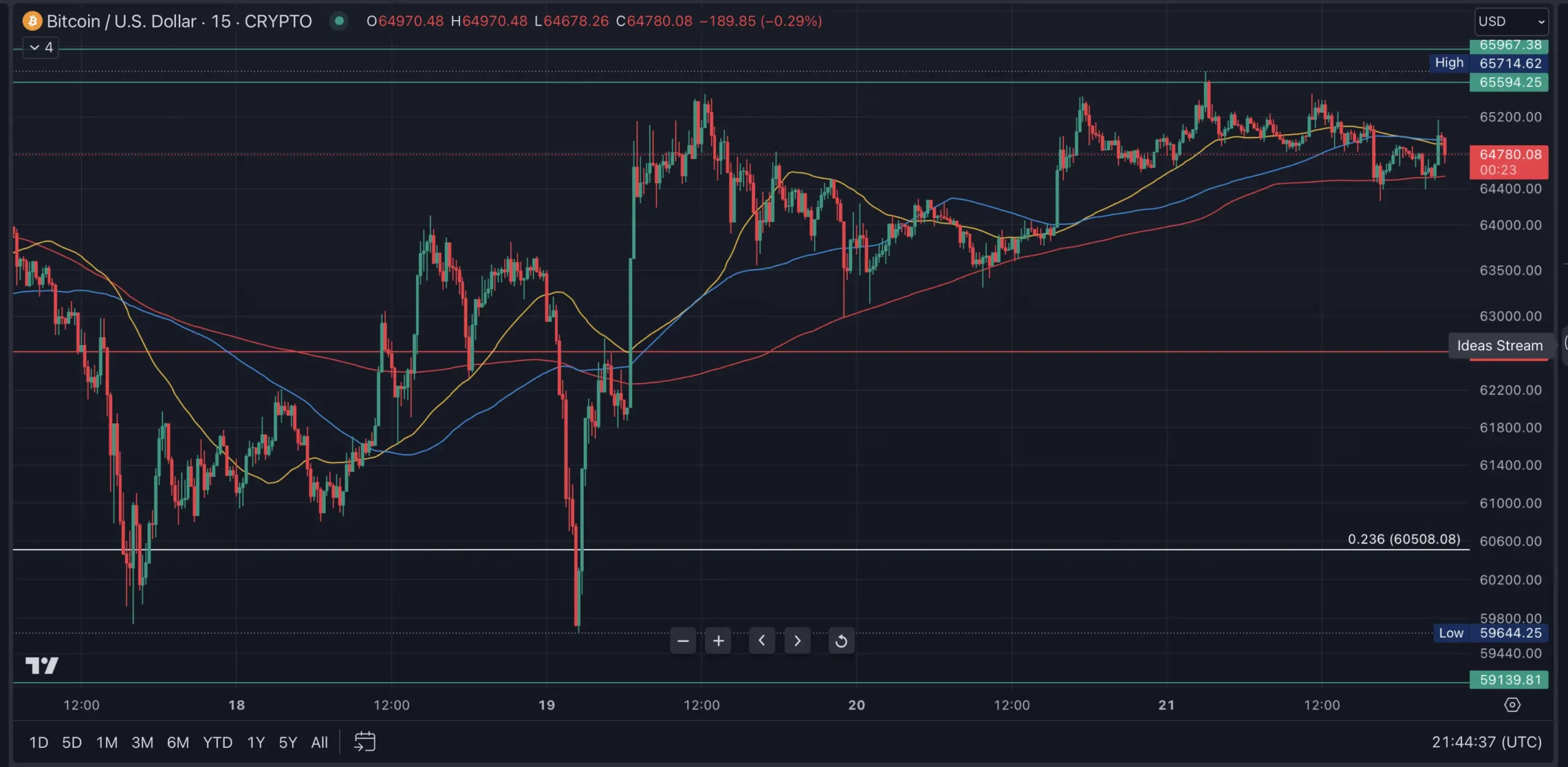- Following a peak of $64,000, Bitcoin experienced a sharp decline to $59,644, reflecting intense market dynamics post-halving event.
- The cryptocurrency briefly recovered to $65,714, testing various resistance levels before a minor correction occurred.
- “This volatility underscores the cautious approach traders should maintain in the current climate,” observed a market analyst.
Explore the dramatic shifts in Bitcoin’s price as it navigates through halving aftermath and potential market recoveries.
Initial Drop and Subsequent Recovery
Bitcoin’s value took a steep dive from its April 19 peak of $64,000 to $59,644 in less than 24 hours following the much-anticipated halving event. Investors reacted swiftly to the new supply rate, triggering a sell-off that led to this initial drop. However, resilience in the market was noted as Bitcoin reclaimed ground, pushing its price back up to over $65,000.
Market Response and Price Fluctuations
The rebound to $65,714 showed strong buyer interest at lower price points, but the ride was not smooth. A series of price adjustments saw Bitcoin testing the $63,000 mark multiple times. Each recovery attempt was met with brief sell-offs, reflecting the ongoing uncertainty and speculative trading that typically follows a halving event.
Future Projections and Analyst Insights
Experts predict continued volatility with possible dips to as low as $48,000 if bearish trends prevail. “Market participants might experience further shakeouts as speculators and long-term holders vie for position,” explained a financial strategist. On the flip side, upward trends could resume, stabilizing the market.
Impact of FUD and Market Sentiment
Further complicating the landscape are the Fear, Uncertainty, and Doubt (FUD) news cycles, which can heavily influence investor behavior and market outcomes. Staying informed and vigilant is crucial as these narratives unfold.
Conclusion
Bitcoin’s recent price trajectory showcases the high stakes and high reward nature of cryptocurrency investments. As the market digests the halving event and reacts to external pressures, participants should brace for more unpredictable swings. The key takeaway? Volatility is not going away, and navigating it requires informed decision-making and steady nerves.

